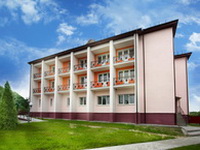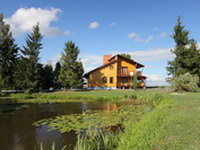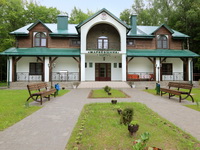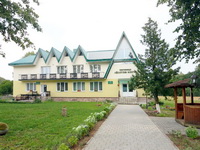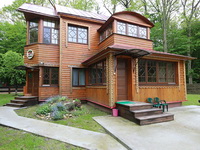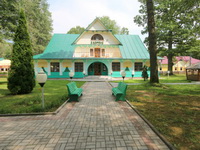Belovezhskaya Pushcha
Excursions and tours with visits to National park Belovezhskaya Pushcha:
-
 Brest fortress - Belovezhskaya Pushcha
Brest fortress - Belovezhskaya Pushcha -
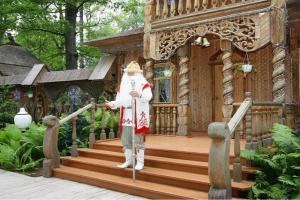 Brest fortress and Ded Moroz residence
Brest fortress and Ded Moroz residence -
 Whole Belarus (5 days)
Whole Belarus (5 days) -
 Whole Belarus (7 days)
Whole Belarus (7 days) -
 The nation feat is immortal (3 days)
The nation feat is immortal (3 days)
The objects of the rest of the National park Belovezhskaya Pushcha:
General information
Belovezhskaya Pushcha – one of the oldest and most titled national parks in Europe. This is one of the oldest and largest relic forest in Europe, which has been preserved almost in its original form and has been protected for more than 600 years. In ancient times, the forest stretches from the Baltic sea to the river Bug and from the river Oder to Dnepr. For many centuries its area has been reduced and today a truly unique balance of primeval lowland forest covers an area of about 150,000 hectares in the territory of the Republic of Belarus and the Republic of Poland.
In Belarus, the National park Belovezhskaya Pushcha is located on the territory of Kamenets, Pruzhany districts of Brest region, as well as Svisloch district of Grodno region. The administrative center of the Belarusian national park is located in the village of Kamenyuki, Kamenetsky district.
This grandiose natural monument has an interesting and long history, because the first written references in the Ipatiev chronicle about Belovezhskaya Pushcha date back to 983. In 1276 Prince Vladimir Volynsky was founded on the territory of Belovezhskaya Pushcha the town of Kamenets. For quite a long time Pushcha was a favourite hunting place of the great Lithuanian and Polish princes. The beginning of the history of Belovezhskaya Pushcha as a conservation object began at the end of the 14th century, when the Prince of the Grand Duchy of Lithuania Yagaylo declared the forest protected and established a ban on hunting, and in 1588 Sigismund August issued a Forest Charter prohibiting the felling of forests on its territory without a ticket, which was signed by the king himself.
After the sections of the Polish-Lithuanian Commonwealth Belovezhskaya Pushcha became the property of the Russian Empire. Catherine II gave away a significant part of its territory to its close, and again allowed to hunt here, except bison. Since 1809, a regular accounting of the number of these mighty animals - symbols of the forest and the whole of Belarus.
The great and irreparable damage was caused to Belovezhskaya Pushcha by The First World War - for several years large areas were cut down, millions of cubic meters of valuable wood were exported to Germany, and bison and deers were almost completely exterminated.
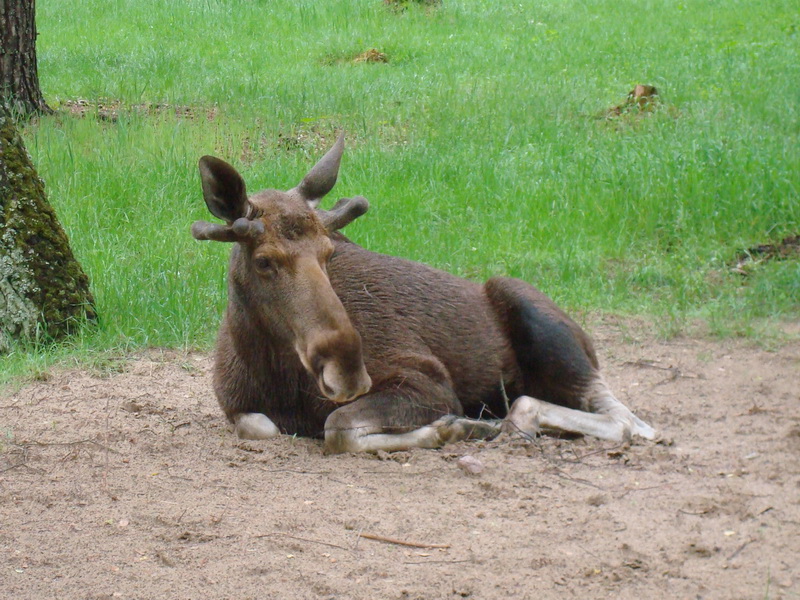
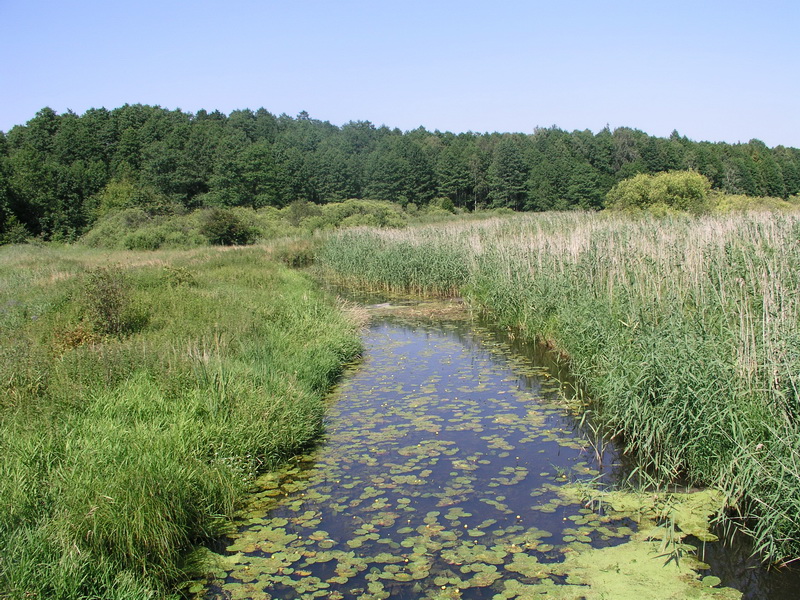
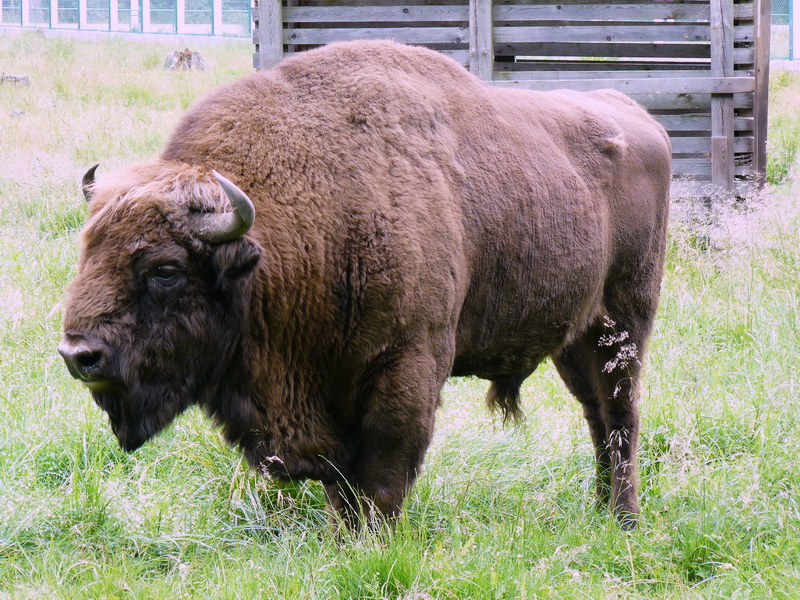
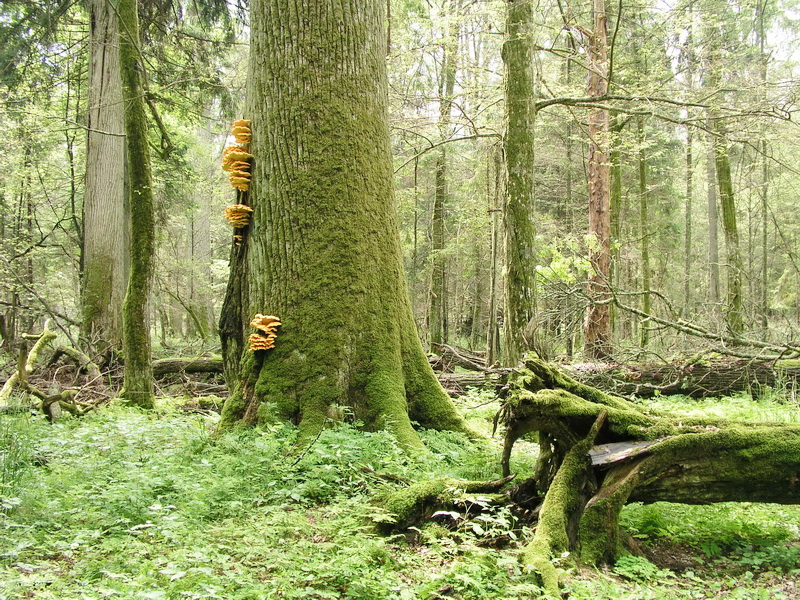
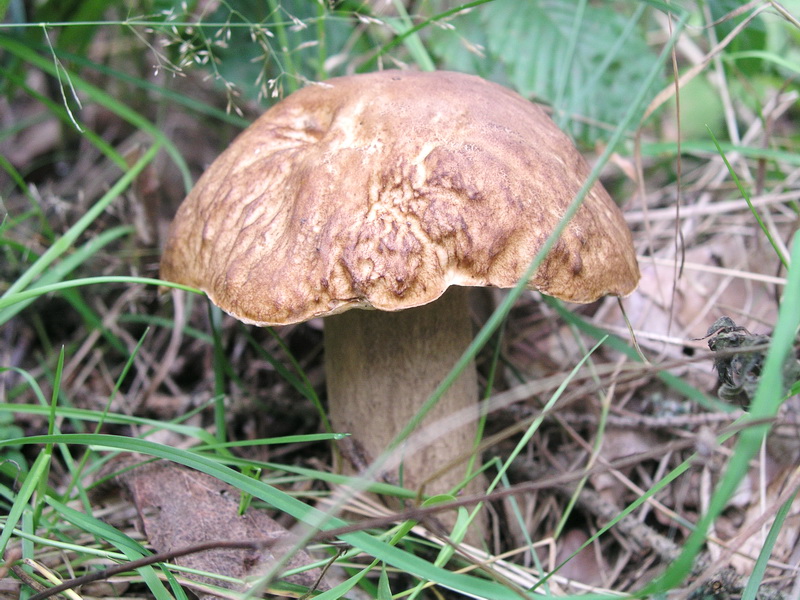
In 1939, Belovezhskaya Pushcha became a part of the BSSR and by the decree of the Council of People's Commissars of the BSSR (No. 1234 from 25.12.1939 g) on its territory was organized the Belarusian National park «Belovezhskaya Pushcha». During the period of German occupation of Belovezhskaya Pushcha's riches were practically not exploited, here on the initiative of Hitler's closest ally — Hermann Goering it was decided to create an exemplary Reich hunting farm, where high titled individuals could hunt. After the war and the establishment of the border of the USSR, part of the reserve together with its historical center — the village of Belovezha, the National Park and the bison house — moved to Poland.
In September 1991, by the decision of the Council of Ministers of the Republic, the status of the forest was changed - it was transformed into the State national park «Belovezhskaya Pushcha». Its territory was divided into functional zones. In 1992 by decision of UNESCO the State National park «Belovezhskaya Pushcha» is included in the list of the world heritage of mankind. The importance of this unique forest is supported by other titles - in 1993 the park was awarded the status of a biosphere reserve, and in 1997 he was awarded a Diploma of the Council of Europe.
The National park Belovezhskaya Pushcha has its own flag and emblem approved by the Heraldic Council of the Department of archives and records management of the Ministry of justice. The coat of arms is a shield with five teeth with bandages on the left, in the upper field of the coat of arms shows a princely crown in red, in the lower silver field - bison. The black band is burdened with two pairs of crossed gold and silver hunting horns on which Imperial crowns are placed as accessories.
The official flag of the reserve is a light rectangular panel, the sides of which are framed by halves of spruce. In the central part of the cloth on the background of oak with a luxurious crown hold a shield (small coat of arms) two primordial inhabitants of the forest bison and deer.
Visa-free regime and ways to get
National park Belovezhskaya Pushcha is located approximately 60 km to the West from Brest and 20 km from the Kamenets city.
Belovezhskaya Pushcha is best visited as part of an organized tourist group, as the passage of transport without a special permit in the reserve is prohibited.
From the city of Brest to the administrative center of the national park of the village Kamenyuki can be reached by bus or taxi, each of which runs between these points 3-4 times a day. At the main entrance of the national park you can purchase required admission tickets. Visitors can arrive in Kamenyuki and by private transport: from Brest you can get here on the highway R83, and if you go from Minsk - then on the highway M1/E30 move in the direction of Brest before turning to the city Zhabinka, and then to the village Kamenyuki through the city of Kamenets.
Foreign citizens of 73 countries can use visa-free regime to visit the tourist and recreational zone «Brest - Grodno», which includes the city of Brest city, Brest, Zhabinka, Kamenets, Pruzhany districts of Brest region, Grodno city, Berestovitsa, Volkovysk, Voronovo, Grodno, Lida, Svisloch, Schuchin districts of Grodno region. The introduction of visa-free regime in this area allows you to enjoy the beauty of not only the unique natural object, but also to combine his visit with walks in Brest or Grodno. In order to take advantage of this opportunity, you must first obtain in one of the certified tourist organizations documents granting citizens the right to individual or group visit the tourist and recreational zone «Brest - Grodno», and at the entrance to have a passport, a health insurance contract, extending its validity to the territory of the Republic of Belarus and providing for an insurance amount of not less than 10 000 euros, as well as a completed migration card form and cash in an amount equivalent to at least 2 basic values., established in the Republic of Belarus, for each day of stay. At the same time, it is important to comply with the main conditions of the visa-free regime - to stay only on the territory of the tourist and recreational zone «Brest - Grodno» for a period of no more than 15 days, as well as to cross the state border through strictly established checkpoints. You can get acquainted with them on the map, and learn more about the visa regime for entry into Belarus - on the internet-portal Belarus-online.by in the section Visa to Belarus.
Flora and fauna
«Belovezhskaya Pushcha» - is a real wonder of the world, which is famous for its centuries-old trees and a variety of wildlife. According to the number of plant and animal species, the national park has no equal in Europe, there are about 250 species of birds and almost 60 mammals, 900 species of plants, including rare and endangered ones.
The bison is considered to be a visiting card of Belovezhskaya Pushcha and a symbol of Belarus from ancient times. This mighty animal, reaching about two meters height and weight of 600-700 kg, few people can remain indifferent. The largest population of bison in the world lives in the forest.
In addition to the mighty bison, you can see bears, deer, wolves and lynx, red deer and roe deer, wild boars, badgers and other animals. Their 310 species of birds living in Belarus, about 250 are found in the forest, including black storks and white-tailed eagles.
National Park Belovezhskaya Pushcha is famous for its centuries-old trees - here you can admire oaks, whose age exceeds five centuries, as well as centuries-old pine trees, firs, ash and lime trees. The most ancient and revered oak king reaches 600 years of age. Rare rock oaks and the only natural population of white fir in Europe have been preserved in the park. In addition, Pushcha is the only place in Belarus where the spruce forest is preserved. It occupies about four percent of the forest.
Many representatives of flora and fauna of Belovezhskaya Pushcha are listed in the Red Book of the Republic of Belarus.
Sights of the national park Belovezhskaya Pushcha
National park Belovezhskaya Pushcha - one of the largest tourist centers of the Republic of Belarus, where thousands of tourists come from all over the world to immerse themselves in the incredible magical atmosphere of the ancient forest, see the famous mighty bison and get acquainted with the Belarusian Ded Moroz.
Numerous excursion, cycling and hiking routes have been developed for the guests of Pushcha. For those who decide to stay here longer than one day built comfortable hotels and guest houses, a restaurant with delicious cuisine, sports grounds, rental equipment and many other infrastructure.
Among the main attractions of the park are the Museum of nature, excursion enclosures with animals, the house-estate of grafa Tyshkevicha, the Estate of Ded Moroz, in the vicinity there is a unique defensive tower Belaya Vezha in Kamenets, as well as rich in architectural and historical monuments of Brest.
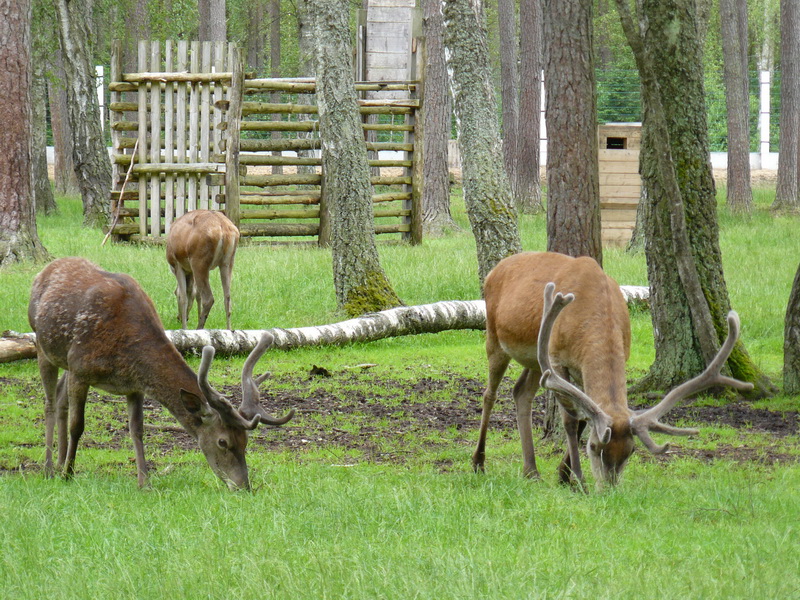

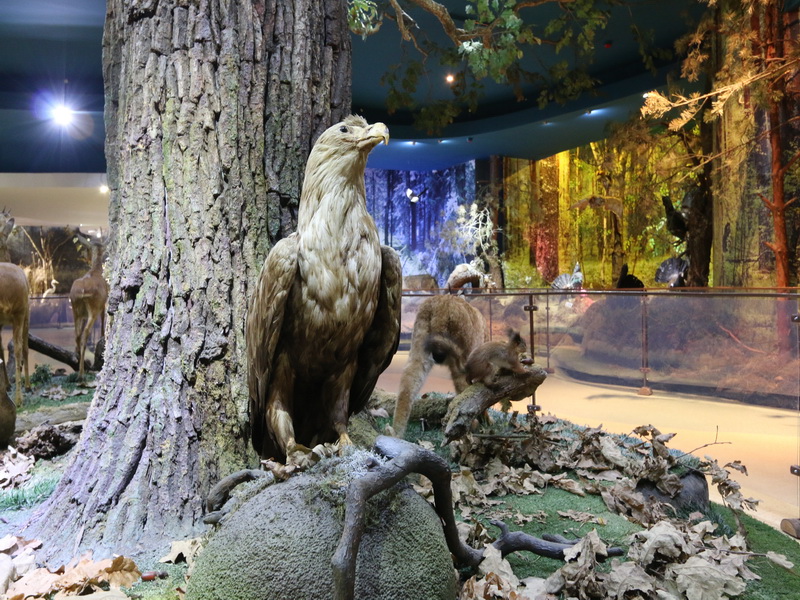
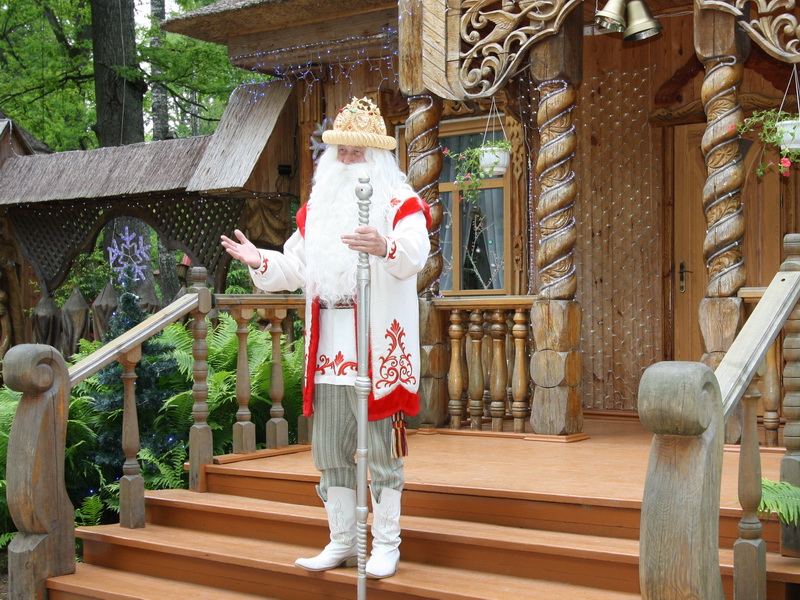

The Museum of nature in Belovezhskaya Pushcha - one of the most visited in Brest region and in Belarus in general with a collection of 1000 exhibits, which will tell about the animal and plant world of Belovezhskaya Pushcha. The five exhibition halls present the richest collections of flora and fauna, which reflect the diversity of different ecosystems, seasonal features and the most striking features of nature at different times of the year.
The expositions are made as close as possible to reality, they create an atmosphere of presence among the primeval nature. The impression is enhanced by the sounds of nature – the noise of the forest, the sound of rain, birds chirping and the roar of forest animals that accompany the journey through the Museum. Tours in English and German, as well as audio guides are offered for foreign tourists.
Excursion enclosures with wild animals allows visitors of the national park to admire the majestic bison, graceful deer and roe deer, to see a cautious lynx, wolves, bear, fox, wild boar, some species of birds of prey. A walk through the enclosures of about 20 hectares takes 1-2 hours. This route is interesting not only for adults but especially for children. After all near they can see forest inhabitants, about which until now heard only in fairy tales or read in the artistic literature.
In the depths of the forest surrounded by a protected forest in 2003 have been opened the Residence of Belarusian Ded Moroz. Coming here you find yourself in a charming fairy tale world created by skillful hands of master carvers. On the territory of 15 hectares located decorated with delicate carving estate Of Santa Claus with throne room, office, bedroom and balcony, as well as a variety of sculptures of characters based on fairy tales «Snow white and the seven dwarfs» and «12 months». Each month has the image of the horoscope sign corresponding to it. According to legend, if you touch your month and make a wish, it will come true.
Not far away is the «Skarbnitsa» - a repository of gifts, letters, drawings, photographs and crafts sent by children to Ded Moroz, who even has his own museum, which contains antiques.
On the territory of the residence grows, as stated in the national park, the highest in Europe forty-meter natural spruce, which is 120 years old. On New year's garlands of colored lights, glittering with thousands of lights, creating an incredible sense of magic.
Sightseeing tours
National Park Belovezhskaya Pushcha can offer visitors not only a fascinating journey into the world of untouched nature, but also a variety of leisure activities. Whether it's a visit to enclosures with the animals, hugs with the king-oak, entertainment, realistic exposition of the Museum or familiarity with the wizard of childhood Ded Moroz - the forest everyone will be able to give vivid emotions! Her visit will be interesting and even informative for both children and adults.For those who are already eager to become a real researcher, one-day excursions and multi-day tours from Minsk with a visit to the National park Belovezhskaya Pushcha are offered. Comfortable transportation, experienced guides and are passionate about the incredible beauty of this region is sure to win the hearts of tourists!
National park Belovezhskaya Pushcha - «must see» in Belarus!
See the schedule of regular tours or book an individual tour can be on the Internet portal ekskursii.by
Aims and goals of the National park Belovezhskaya Pushcha
The state nature protection establishment the National park «Belovezhskaya Pushcha» it is a complex environmental-economic and scientific-research institution. It is under the control of the office of The President of the Republic of Belarus, which emphasizes the importance of the facility in the country. The administrative center of the HNP «Belovezhskaya Pushcha» located in the village of Kamenyuki, Kamenets district, 60 km from Brest and 20 km from the district centre of Kamenets.
The national park is created for preservation in a natural state and complex studying of standard and unique natural complexes and objects of the Belovezhskaya Pushcha virgin wood, biological and landscape diversity of the territory, restoration of the broken natural complexes and objects having special ecological, historical and cultural and esthetic value, and also their steady use in nature protection, scientific, educational, improving, recreational and other purposes.
To preserve the unique nature in Belovezhskaya Pushcha there are 4 functional zones with different protection regime:
the
- The economic zone is intended for placement and operation of objects of administrative, production and recreational appointment, acceptance and service of tourists, accommodation and implementation of economic activity of local population. Attendance is free.
- Security or buffer , where land is reserved for users, but there are a number of restrictions on economic activity.
Protected area – the zone of untouched nature. Purpose - to reserve the gene pool of plants and animals, the standard of nature, the creation of conditions for the natural development of biogeocenoses and their components. The zone primarily contains indigenous old-growth natural coniferous-deciduous forest. On its territory all types of economic and other activities are prohibited, except for scientific research and protection.
The regulated nature zone - managed natural area. Purpose - the study, preservation and restoration of ecosystems, typical for the National park «Belovezhskaya Pushcha». Activities in this zone should provide optimal conditions for the sustainable development of natural ecosystems with the use of science-based conservation measures. It is allowed to conduct regulated tourism under the guidance of guides of the National park.
Recreation area is intended for the organization of tourism, recreation, the holding of mass cultural and wellness events, as well as study the influence of recreational load on ecosystem. Environmental and economic activities are aimed at preserving and, to a certain extent, arrangement of forest landscapes and water bodies for recreational and educational purposes. Visit accompanied by guides or free.
- the preservation of the natural condition of the unique natural complex, the genetic аund of living organisms, the Bialowieza forest is typical for the south-west area of the Republic of Belarus;
- creation of stable natural conditions, the production of ecosystems in general and species individually;
- preservation of historical and cultural heritage;
- conservation and restoration of bison population, as well as other valuable, rare and endangered species of flora and fauna of the territory;
- study of the natural course of natural processes occurring in the natural complexes of the national park, its biological diversity;
- organization and development of tourism and recreational activities;
- integrated management based on traditional methods and advanced achievements of sparing nature.



